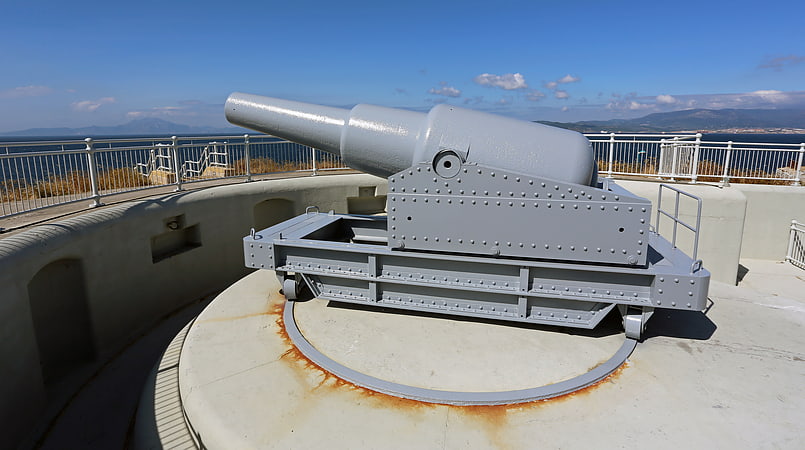Discover 8 hidden attractions, cool sights, and unusual things to do in Cawsand (United Kingdom). Don't miss out on these must-see attractions: Mount Edgcumbe Country Park, St Mary's and St Julian's Church, and St Germanus' Church. Also, be sure to include Maker Battery in your itinerary.
Below, you can find the list of the most amazing places you should visit in Cawsand (England).
Table of Contents
Mount Edgcumbe Country Park

Tourist attraction in Cremyll, England. Mount Edgcumbe Country Park is listed as Grade I on the National Register of Historic Parks and Gardens and is one of four designated country parks in Cornwall, England, United Kingdom. The 885 acres country park is on the Rame Peninsula, overlooking Plymouth Sound and the River Tamar. The park has been famous since the 18th century, when the Edgcumbe family created formal gardens, temples, follies and woodlands around the Tudor house. Specimen trees, such as Sequoiadendron giganteum, stand against copses which shelter a herd of wild fallow deer. The South West Coast Path runs through the park for nine miles along the coastline.
The park also contains the villages of Kingsand and Cawsand, as well as Mount Edgcumbe House itself. The Formal Gardens are grouped in the lower park near Cremyll. Originally a 17th-century 'wilderness' garden, the present scheme was laid out by the Edgcumbe family in the 18th century. The Formal Gardens include an Orangery, an Italian Garden, a French Garden, an English Garden and a Jubilee Garden, which opened in 2002, to celebrate the Queen's Golden Jubilee. The park and Formal Gardens are open all year round and admission is free. The park and gardens are jointly managed by Cornwall Council and Plymouth City Council. Although the park covers a large area, the park has limited formal maintenance. This gives it a rough and ready rural feel in all except the Formal Gardens.[1]
Address: Mount Edgcumbe, Cawsand
St Mary's and St Julian's Church

St Mary's and St Julian's Church is a Church of England parish church in Maker, Cornwall, England, UK. The church dates to the 15th century and has been a Grade I listed building since 1968.[2]
St Germanus' Church

St Germanus' Church is a Church of England church in Rame, Cornwall, England, UK. Much of the existing church dates to the 13th and 15th centuries. It has been Grade I listed since 1960.
The church is dedicated to St. Germanus, a bishop of Auxerre in Late Antique Gaul who is supposed to have landed in the neighbourhood when he came to Britain to suppress the Pelagian heresy in about 429.[3]
Maker Battery

Maker Battery is a former 19th-century coastal artillery battery, built to strengthen the defence of the Royal Naval Dockyard at Devonport.
The battery was proposed in 1885 on the recommendations of the Stanhope Committee report and completed in 1887. It was built with emplacements for a single 12.5-inch Rifled Muzzle Loading (RML) gun which was mounted. It was then supplemented in 1890 when two further 12.5-inch guns were moved from nearby Grenville Battery.
The gun positions were served by underground magazines. The rear of the battery is enclosed by a small ditch and drawbridge. There was no barrack accommodation at the battery, but a small cookhouse was built to cater for the men expected to man the battery.
The battery was upgraded with newer armament in 1899 when the battery was re-modelled for two 6-inch breech loading (BL) guns which were installed by 1903. These remained in place until 1911 when they were dismounted. The battery was abandoned by the War Office in 1948.
The battery remains complete but derelict today.[4]
Grenville Battery

Grenville Battery is a former coastal artillery battery, built to defend the Royal Naval Dockyard at Devonport.
The battery was originally built between 1760 and 1791 as part of the Maker Redoubt line and then named 'Maker No 4 (North Gloucester) Redoubt', it was intended to form part of a long defensive line of bastions to a larger fort which was never built. The battery had 15 gun embrasures. It was disarmed in 1815.
The re-modelling of the battery was proposed in 1885 on the recommendations of the Stanhope Committee report and completed in 1887. It was renamed Grenville Battery in 1899. It was built with emplacements for two 12.5-inch Rifled Muzzle Loading (RML) guns which were both mounted. However, in 1890 they were moved to nearby Maker Battery.
The gun positions were served by underground magazines. The rear of the battery is enclosed by a loopholed wall, small ditch and drawbridge. There was no barrack accommodation at the battery, but a small cookhouse was built to cater for the men expected to man the battery and nearby Maker Battery.
The battery was upgraded with newer armament in 1899 when the battery was re-modelled for three 4.7-inch Quick Firing (QF) guns which were installed by 1901. These remained in place until 1927 when they were dismounted. The battery was abandoned by the War Office in 1948.
The battery remains complete and was Grade II listed in 1972.
It was overgrown for many years, but in 2020 the battery was cleared of undergrowth and accumulated rubbish by the Rame Conservation Trust, with financial support from Historic England.[5]
Raleigh Battery

Raleigh Battery is a former coastal artillery battery, built to defend the Royal Naval Dockyard at Devonport.
The battery was constructed between March 1890 and August 1894 at a cost of £4,963. It was located between Hawkins Battery and due-east of Maker Farm, on sloping land facing the sea. The battery was positioned to prevent ships lying at anchor off Cawsand Bay and to support Picklecombe Fort guarding the approaches to Plymouth Sound. It mounted two 10-inch Breech Loading (BL) guns, one on an Elswick Ordnance Company barbette mounting, the other on a Royal Carriage Department barbette mounting.
The gun positions were served by underground magazines which were linked by a tunnel that slopes down underneath a central earth traverse. There was one magazine to the north of the tunnel and two cartridge stores (each with its own serving hatch) to the south. Each gun emplacement had a store, cartridge recess, a shell recess and a shelter for the gun crew, all built into the concrete gun apron. To the right of the right-hand gun emplacement was a water catchment area and tank. The caretaker's office was on the opposite side which consisted of two bedrooms, a living room and a scullery. In between both of these were two Depression range finders enabling the guns to accurately fire at their targets. Behind the left hand emplacement was an oil store. The battery was surrounded by an iron pallisade fence. There was no barrack accommodation at the battery.
The battery was one of very few to mount 10-inch guns, as by the 1890s British Coast Artillery armament was standardised on the 9.2-inch Breech Loading (BL) gun. The nearby Penlee Battery could provide the required defence, and as a result the guns were dismounted in 1910. The battery was abandoned by the War Office in 1948.
The battery remains complete but overgrown.[6]
Picklecombe Fort

Historical landmark in England. Fort Picklecombe stands on the extreme south eastern coast of Cornwall, a couple of miles west of the city of Plymouth. The fort has been a residential complex since the early 1970s but has a history dating back 150 years.[7]
Polhawn Fort

Historical place, View point, Memorial
Address: Westhead Rd, PL10 1LL Cornwall